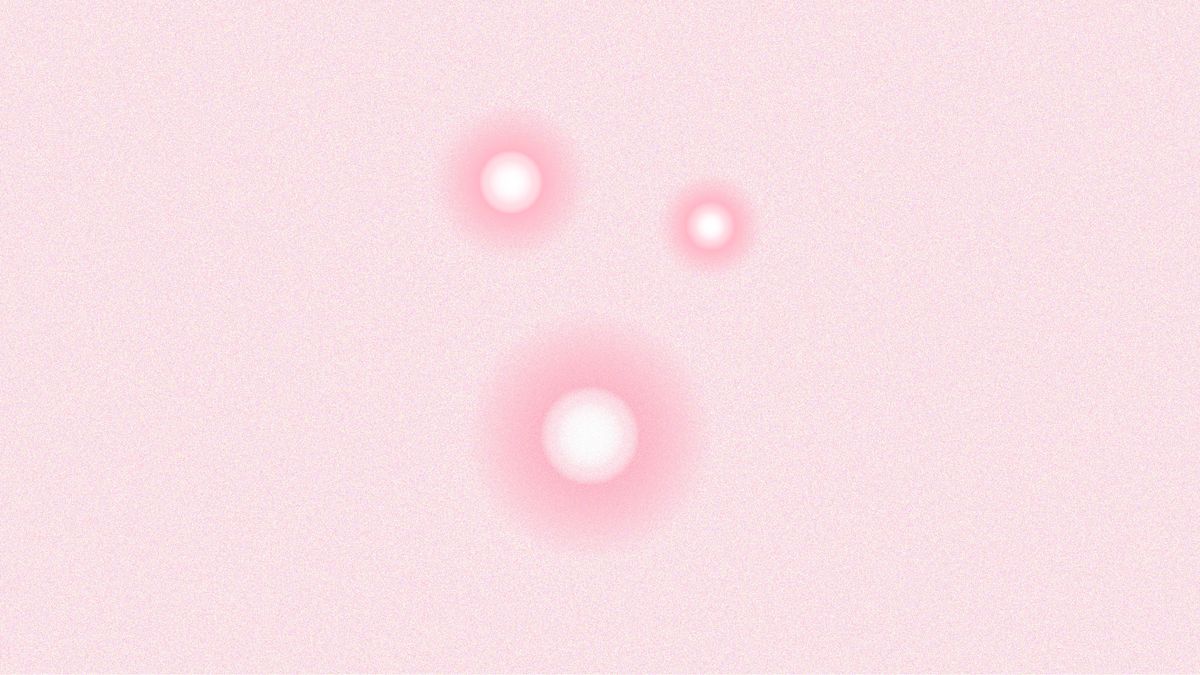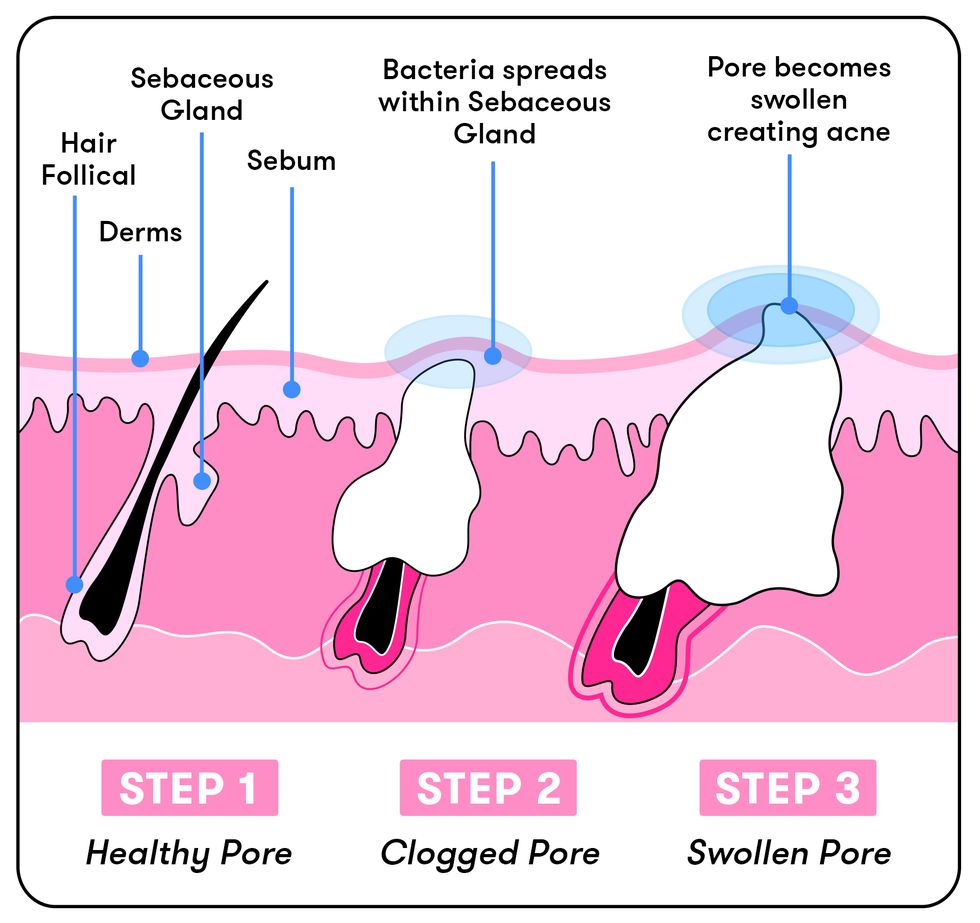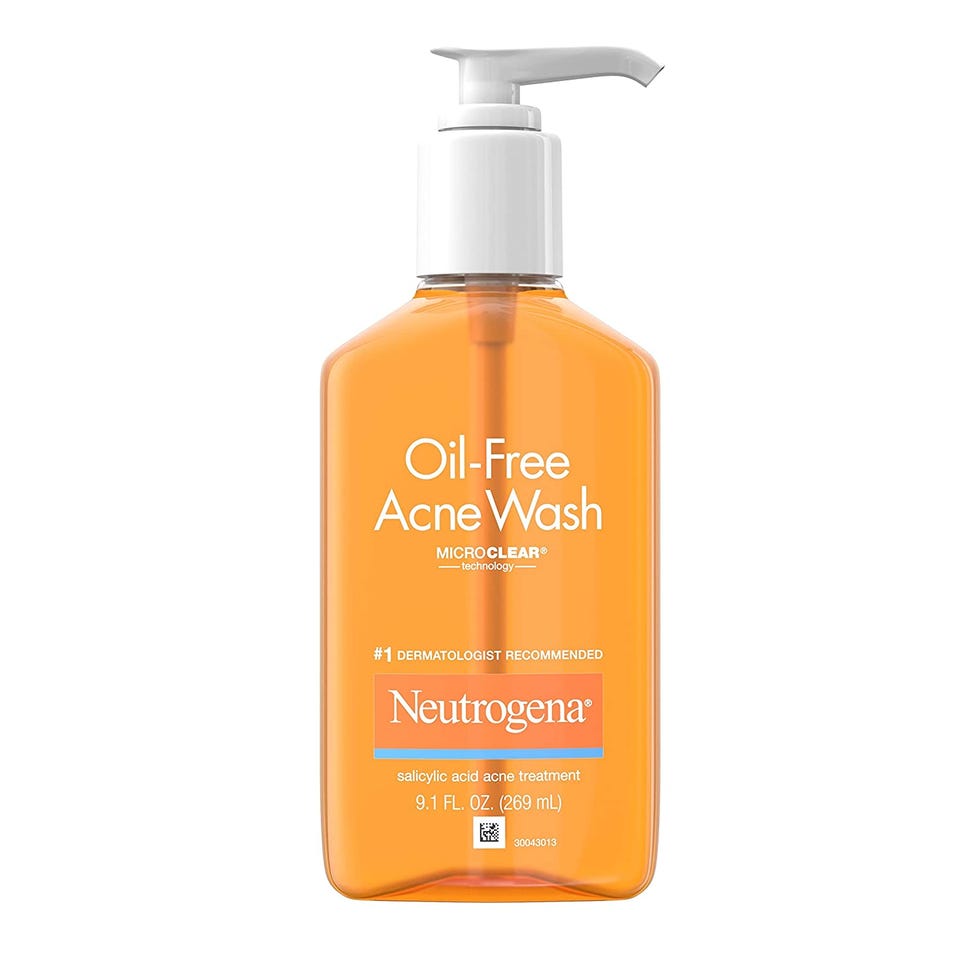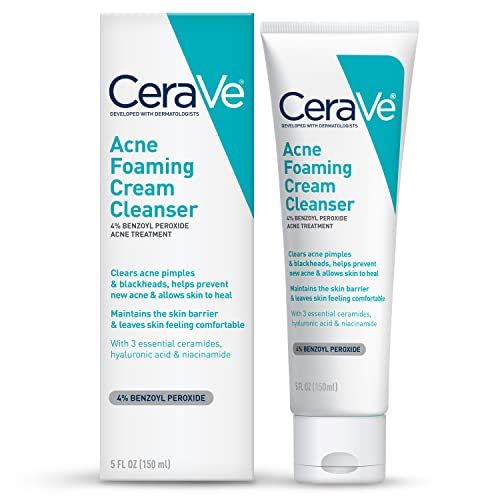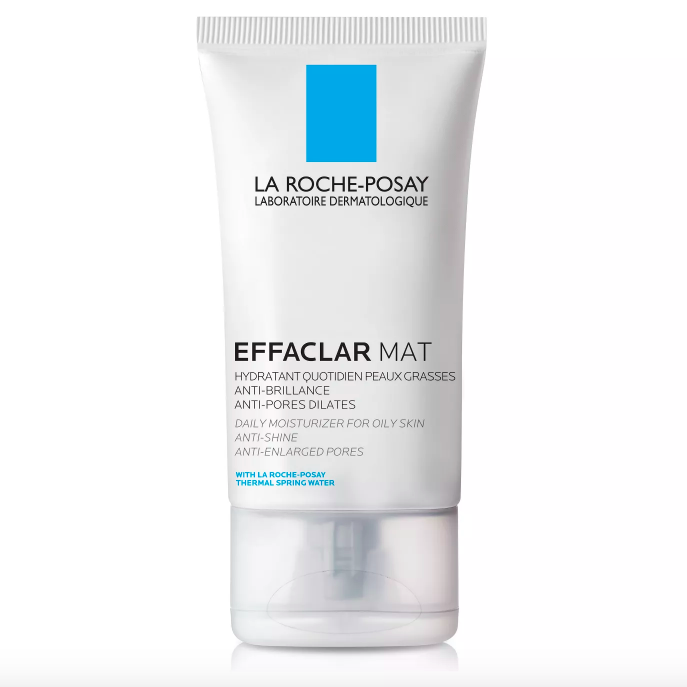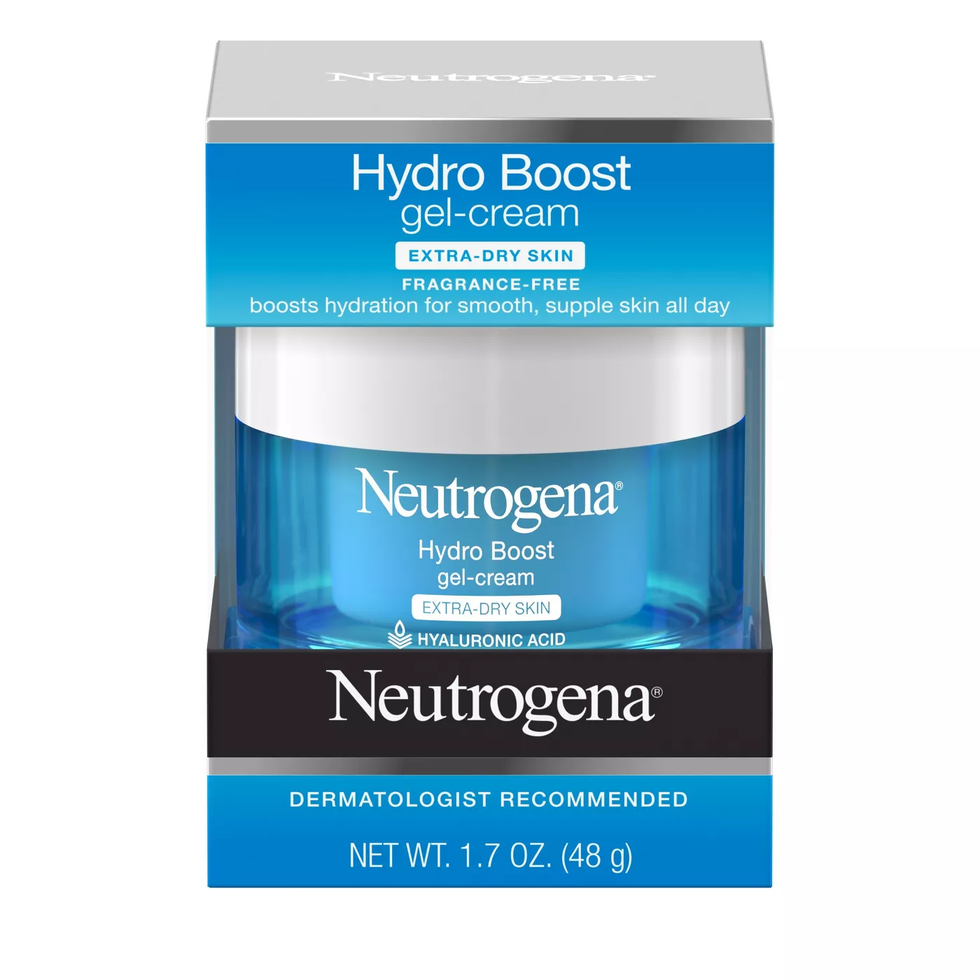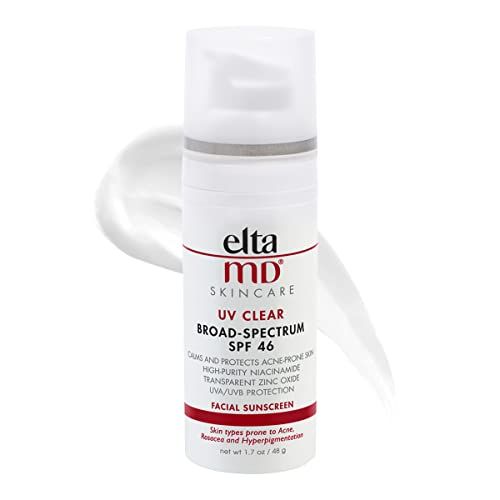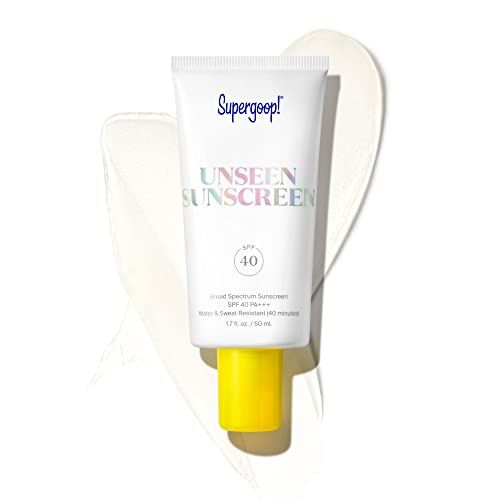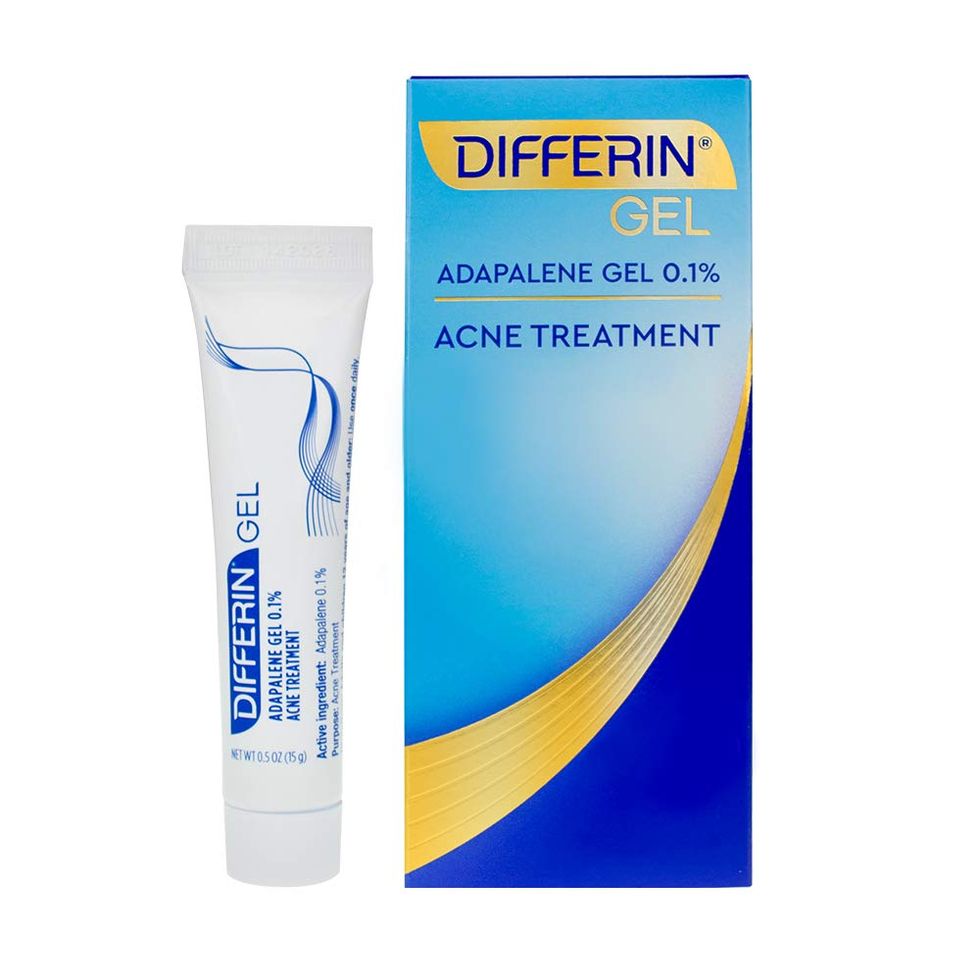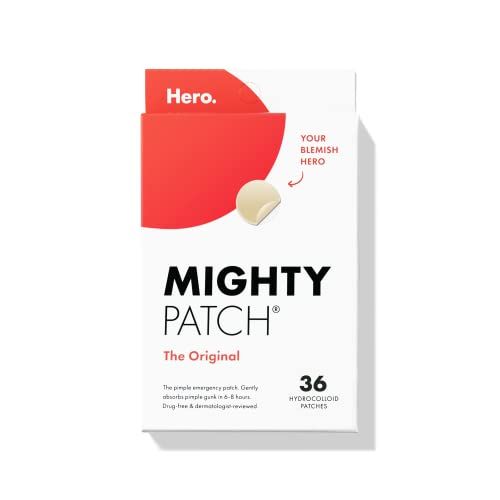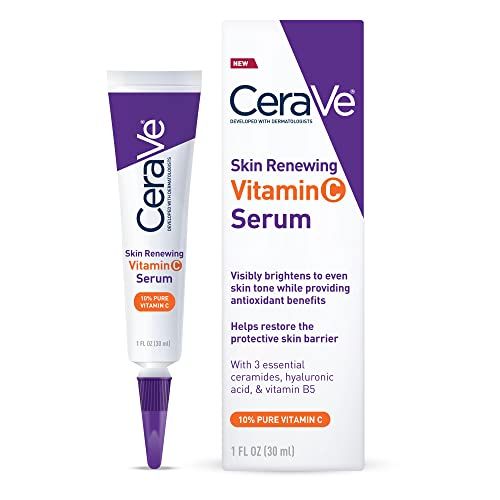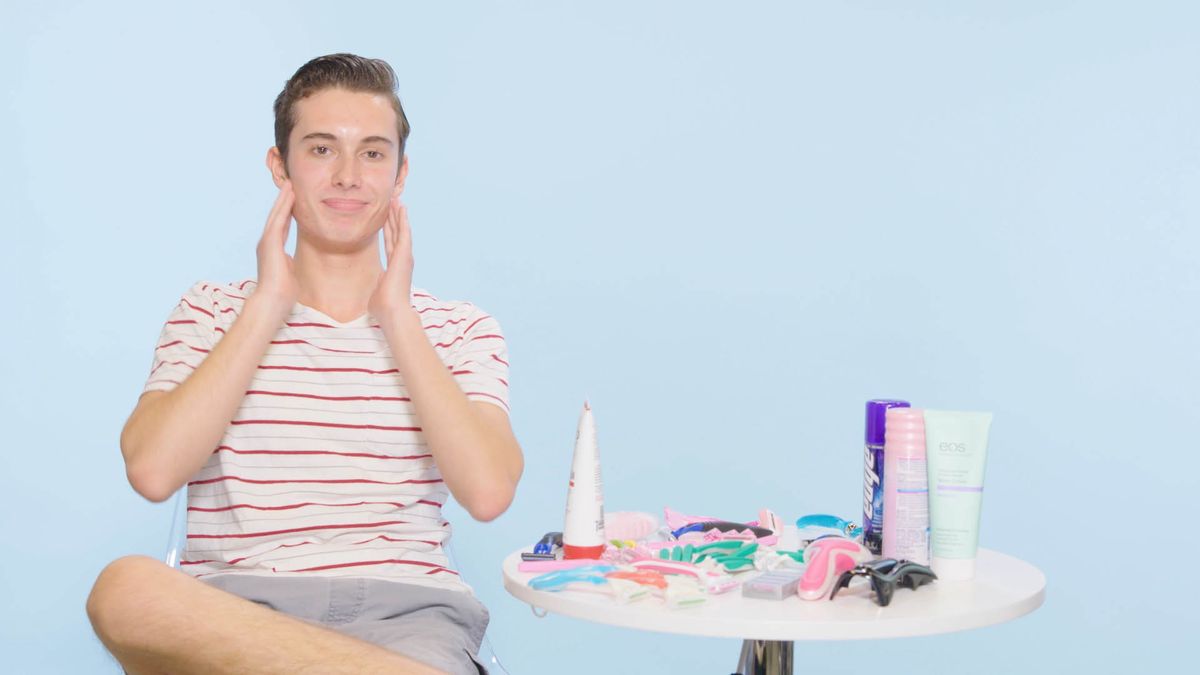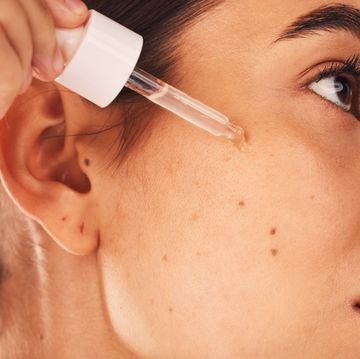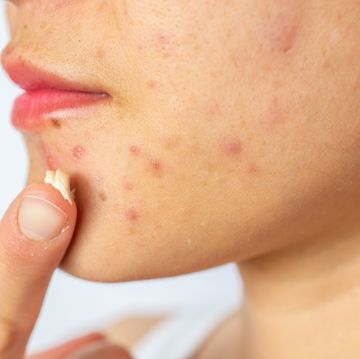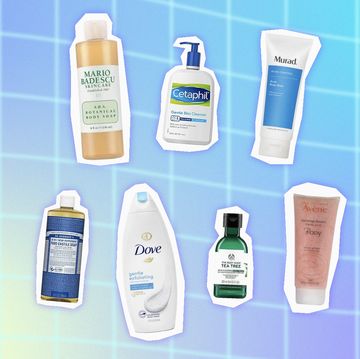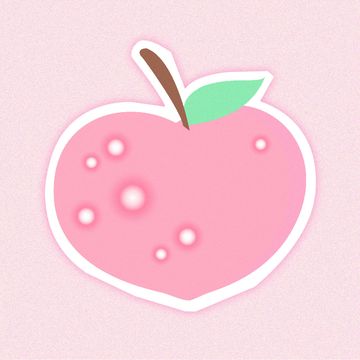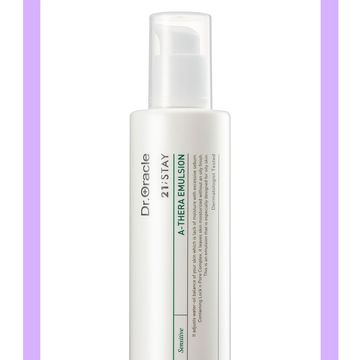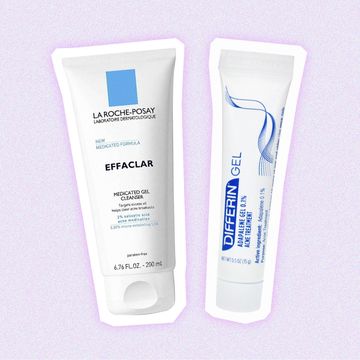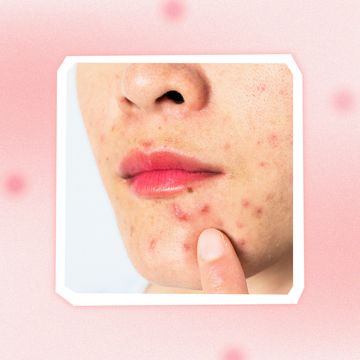Not everyone has experienced the pain of cystic acne, but if you do suffer from the skin condition, you know how rough a breakout can be. Unlike regular acne breakouts, which are typically caused by clogged pores and hormonal changes and pop up as whiteheads and blackheads, a cystic acne flare-up consists of painful pimples that form deep under the skin surface. Cystic acne can emerge anywhere from your chin, cheeks, chest, or back, and if not treated correctly, can leave severe scarring.
It sounds scary, but there a number of tips and tricks that can help mitigate and treat the pain and inflammation. Below, we talked to Dr. Ava Shamban, board-certified cosmetic dermatologist and owner of Ava MD and Skin Five, and Dr. Rebecca Marcus, board-certified dermatologist and founder of Maei MD, to get all the deets on the causes of cystic acne, treatment, and prevention, so you can tackle breakouts like a pro. Whether you just have the occasional underground pimple, or you get clusters of them on the reg, these tips will help you get rid of cystic acne.
What is cystic acne?
Cystic acne develops when pores get clogged with oil and dead skin cells, and pus-filled pimples form deep under the skin surface (hence the name: underground pimple). Trapped bacteria in the pores cause inflammation and swell into painful nodules, often characterized as hard lumps or knots, that feels almost like a pebble under your skin, Dr. Shamban explains.
Since these pimples live underneath the skin’s surface, they don’t form whiteheads or blackheads, so they’re difficult to pop. The effect is a face covered with red bumps, almost like cobblestones. And unlike less severe acne, cystic acne can be super painful because it’s 100 percent inflammatory, meaning the pimples are going to be red and irritated. That also means that, if left untreated, the underground pimples can cause pretty bad scarring.
“Teens, in general, tend to get cystic acne on their cheeks and on their temple, like right at the edge of the eyebrow,” Dr. Shamban says. However, teenagers aren’t the only age group susceptible to these types of blemishes.
What causes cystic acne?
“Cystic acne is multifactorial,” Dr. Shamban explains. So many different things can cause a breakout, but when you get an underground pimple, it most likely has to do with one (or a few) of these five causes:
Genetics
That’s right, just like many other skin conditions, cystic acne can run in the family. So, if your mom or dad has suffered from cystic acne breakouts, you might have some painful blemishes in your future as well. “Acne is associated with genetic predisposition, so in most cases, you cannot necessarily prevent it,” Dr. Marcus explains.
Usually, genetic cystic acne will first appear during puberty and last “anywhere from six to eight years,” Dr. Shamban says.
Hormones
“Acne occurs when excess sebum production, hormonal fluctuations, and bacteria on the skin converge to cause inflammatory papules [raised bumps] and nodules in the skin,” Dr. Marcus explains. Sebum is an oily substance produced by your sebaceous glands, and when your body produces too much oil, it gets stuck in your pores and traps bacteria. Said bacteria multiply, causing the inflammation that forms a cystic pimple.
Basically, when your hormones are raging, your cystic acne will get worse. Because of this, you’re more likely to experience a bad breakout during puberty, as well as a few days before each period.
Stress
When you’re under pressure and your stress level rises, your body responds by producing cortisol, another hormone that over-stimulates your oil glands. Excess oil then triggers acne breakouts.
Processed Foods
While eating processed foods may not directly cause cystic acne if you’re already prone to breakouts, it could worsen your symptoms. “Minimizing dairy, sugar, and other pro-inflammatory foods in your diet can help in some cases,” Dr. Marcus advises. Pro-inflammatory foods include red meat, processed meat, refined carbohydrates like white rice, white bread, sweets, and sweetened drinks and sodas, according to Harvard Medical School.
Lack of Sleep
Like processed or pro-inflammatory foods, insufficient sleep can make any acne you have worse. For some, a lack of sleep is a stressor, so when the body doesn’t get enough zzzz’s, it raises cortisone levels to compensate and maintain wakefulness, according to a 2015 study published in Sleep Science.
How can you treat and prevent cystic acne?
Since cystic acne is multifactorial, “it’s not just enough to change your cleanser and put on some gels,” Dr. Shamban says. You do, however, have a lot of different options when treating underground pimples, including over-the-counter products and prescription treatments.
Use the right cleanser
Dr. Marcus suggests that you use only non-comedogenic skincare products, which are said not to block pores. Cleansers with salicylic acid, an anti-inflammatory that can reduce the redness in regular pimples and underground pimples, is a good starting point, Dr. Shamban says.
She also recommends a cleanser with a low concentration of benzoyl peroxide, as people with cystic acne tend to have more sensitive skin. “You have to treat the skin gently,” Dr. Shamban says. “It’s not about scrubbing it with brillo pads.”
Keep the skin moisturized
“Make sure not to overly dry out your skin, as over-dry skin compensates by producing more oil, which can eventually make your problem worse,” Dr. Marcus advises. To avoid this, top off your skincare routine with a hydrating moisturizer and sunscreen.
Try topical retinol
Before you go to sleep, try applying an adapalene gel. It’s a type of retinoid that can work on your skin as you catch up on those all-important zzzz’s. “Retinoids help by regulating the sebaceous gland, and also by improving cell turnover,” Dr. Marcus explains. Although she advises that prescription-strength treatments often work best (these are prescribed by your dermatologist), there are some over-the-counter options to try.
If you have sensitive skin, use retinoids in smaller quantities — or consult with your derm beforehand. “Those with sensitive skin may not be able to tolerate retinoids as frequently, so if you have sensitive skin, I recommend using retinoids on alternating nights, and/or using the ‘retinoid sandwich’ method, which means layering moisturizer, retinoid, and then moisturizer again,” Dr. Marcus says. “This method decreases irritation, but also decreases penetration of the medication.”
Apply spot treatments
Spot treatments, including pimple patches, can help reduce the swelling of breakouts. But unlike retinoids, these methods are for targeting an individual pimple, not the entire breakout.
“Spot treatments and pimple patches may be used to speed up healing and resolution of individual acne lesions, but of course are only used once a pimple has already appeared,” Dr. Marcus explains. “Retinoids are used preventatively all over the affected area to decrease the incidence of acne lesions.”
Most pimple patches are made with ingredients like hydrocolloid, a plant-based gel that gently absorbs and traps gunk. “They can also help draw access sebum out of pores,” Dr. Marcus adds. While pimple patches are typically less drying than liquid, gel, or cream-based spot treatments, both options work to unclog pores and combat acne-causing bacteria.
Schedule an appointment with your dermatologist for prescription treatments
“If over-the-counter treatments have not helped you within about a month, or if your acne seems to have the potential to leave scars and marks, it’s time to see a dermatologist,” Dr. Marcus advises.
Depending on the severity of your cystic acne, a derm might prescribe long-term treatments like Epiduo, Aczone, Retin-A, or Accutane, a strong oral medication that decreases the amount of oil that your sebaceous glands produce.
Don’t pick!
Picking at zits not only makes them worse, but it can also lead to permanent scarring. Acne scars don’t completely disappear, although there are some treatments — like retinoids and vitamin C serums — that can help lessen discoloration and inflammation.
Try icing inflamed areas
You read that correctly. If your cystic acne hurts, ice it like you would a swollen ankle. According to Healthline, coldness should help reduce redness and swelling in inflammatory acne (including cysts). But before you rub the ice against your skin, wrap it with a cloth or paper towel. That way, the coldness won’t be too shocking.
After cleaning, apply the ice in circular motions for 1-minute increments. If your pimple is on the tougher side, you can follow up with multiple increments. Just make sure to wait 5 minutes in between to avoid damaging your skin.
“Dry ice treatments performed by your dermatologist can also be helpful in reducing swelling and redness,” Dr. Marcus adds.
Make behavioral changes
Altering some of your behaviors may help prevent or improve cystic acne. Make sure you’re getting enough sleep, relieving daily stress, and trying to minimize processed foods and artificial sugar. All of this can be easier said than done (especially when it comes to reducing stress), but the effects on your skin will be worth it.
Kristin Koch is the Editor in Chief of Seventeen, overseeing the content and editorial operations for all of Seventeen's digital and print efforts. Before coming to Seventeen, Koch held editor positions at Glamour, Vanity Fair, and The Knot. In 2016, she founded lifestyle blog, Closetful of Clothes, where she covers everything from style and interiors to travel. A Chicago native, Koch graduated from Colgate University with a degree in History. She loves pizza, rom-coms and HGTV.
Carolyn Twersky is an associate editor for Seventeen covering celebrities, entertainment, politics, trends, and health. On her off time, she's probably watching Ru Paul's Drag Race, traversing NYC for the best donuts, or, most likely, enjoying time in her favorite place in the world: her bed.
